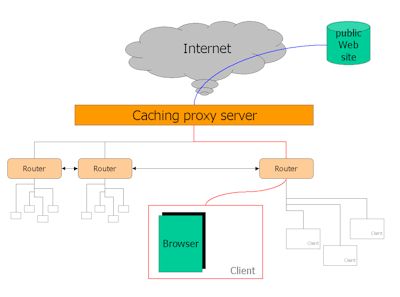Proxy Server Caching For Improved Web Performance
The use of Cache in today's day and age is critical and essential. What is Cache you may ask? Cache is a high-speed data storage layer that stores a copy of data that can be reused without needing to generate from scratch. One of the most common applications of Cache is in a Proxy Server, where the Cache is used to reduce network traffic and latency. Let us take a closer look at some examples of how Cache can be used to its full potential.

Reducing Network Latency
One of the most significant benefits of Cache is that it reduces network latency. When a user requests some data from a website or server, it can take some time for the server to respond. This is because the server needs to collect and process all of the data required to serve the request. However, if there is a Cache in place for that data, it can be served from the Cache, significantly reducing the time it takes to fulfill the request, and reducing network latency. Reduced latency can enhance user experience on a website and could potentially lead to improved search engine rankings.
Improving Web Application Performance
Web applications often feature multiple pages, and these pages might contain the same information across them. With a Cache in place, Web applications can load much faster since elements that are common across pages can be stored in the Cache and reused, instead of loading them anew each time. By enabling Web applications to load much faster, the performance of the Web application can be significantly improved, enhancing the end-user experience.
Preventing Overload
In some cases, heavy server loads can result in slow response times, which leads to a poor user experience. However, by using Cache efficiently, servers can adequately handle occasional spikes in traffic. By caching parts of the website, servers can offload their workloads to the Cache, which allows the server to handle the resulting traffic without slowing down.
Conserving Server Resources
Cache can be instrumental in conserving server resources. When a request hits the server and requires processing, it burdens the server's resource. However, when the same request is processed from the Cache, it doesn't burden the server's fundamental workload. Therefore, Cache can help free up server resources, enabling it to serve other requests that genuinely require processing, ultimately improving server performance.
Reducing Bandwidth Usage
Cache can also help in reducing bandwidth usage. By caching commonly requested data, the amount of data that needs to be downloaded from the server repeatedly can be significantly reduced. As a result, Cache can help to reduce bandwidth usage, ultimately reducing data usage costs.
Final Thoughts
Cache is an essential feature of a modern web application. With its near-immediate access times, caching can enhance the user experience, reduce network latency, and improve overall Web application performance. By taking advantage of the various use cases of Cache, developers can create highly responsive and user-friendly applications that provide an excellent end-user experience.
Now that we've explored some of the primary use cases of Cache, it's easy to see why it's such an essential feature for today's modern developer. From reducing network latency to conserving server resources, caching can boost website performance and ultimately deliver a fast, seamless, and reliable user experience. In an increasingly digital world, it's vital to keep up with all these changes and stay ahead of the curve.



Post a Comment for "Proxy Server Caching For Improved Web Performance"